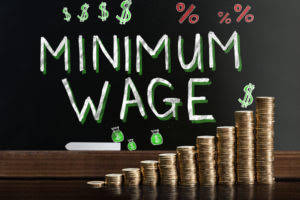Currently Empty: 0,00 د.إ

It can also be used to set up cost-control programs, with the goal of improving net margins for the company in the future. It helps company management to make decisions and is tailored to the specific needs of each separate firm. This differs from financial accounting, which must follow a set template and is used to inform people outside the company, such as investors, about its financial performance. All businesses use some form of financial accounting, as these statements serve a purpose both internally and externally, providing detailed data on all business transactions. Cost accounting is useful for making internal business decisions that improve a company’s production process, especially for larger businesses with more expenses. As we discussed earlier, the retail method of accounting shouldn’t be viewed as its own discipline.
Financial Accounting for Decision Making – Case Studies
Each type of fiber costs a different amount, and certain knitting needles are more expensive than others. However, you have chosen to use a keystone markup strategy, so you know you have a 50% markup on all items, regardless of what they are. Total additions to inventory from purchases and expenses are captured at cost and retail to calculate a mark-up percent by merchandise grouping, e.g. department/class and location.
What Is the Cost Accounting Method?
- It might make more sense that the dice have gotten mixed up in your bucket, and there’s a good chance that you’ve sold a number of dice from all three orders you placed.
- Since it is not GAAP-compliant, cost accounting cannot be used for a company’s audited financial statements released to the public.
- The primary advantage of the retail method is the ease of the calculation.
- Retail accounting is a specific method of accounting that assists companies in tracking inventory without manually counting all of the items in the store or warehouse.
- The cash flow statement records the actual date the cash is received.
- Read more for an overview of retail accounting, how it differs from other accounting forms, and the best way to get started.
In simple terms, retail accounting involves calculating the cost of inventory in relation https://x.com/BooksTimeInc to its selling price. Essentially, retail business owners need to determine the actual cost of purchased inventory. Using weighted averages to find the inventory value is helpful to stores that sell a variety of items at different prices.

First in, first out (FIFO method of accounting)
Keeping accurate inventory records will also help save time while preparing your tax statements. For example, your business purchased 50 bags of chips for $1 each, then at a later date, decided to buy 30 more, but the price rose to $2 each. Business owners need to ensure they understand this method and choose the best way forward when calculating inventory information. Whether through the use of cash basis accounting or accrual accounting, all transactions going in and out of the business accounts need to be accounted for appropriately. Similar to the first method, last in, first out reverses the order in which the items are cost accounting vs retail accounting calculated.

They will be able to make a recommendation regarding which costing method is most favorable for your business. The weighted average method of inventory costing is often used when inventory is not perishable but stock can still easily be rotated or intermingled. Specific identification inventory costing attaches cost to specific items in inventory. The specific identification method of inventory costing applies primarily to high-ticket items, like automobiles.
- Think about what your business needs to decide which method is best for you.
- Higher-skilled accountants and auditors are likely to charge more for their services when evaluating a cost-accounting system.
- In contrast to general accounting or financial accounting, cost accounting is an internally focused, firm-specific method used to implement cost controls.
- In addition, during this period you invested US$15,000 in replenishing your stock of fixtures and accessories.
- This step is crucial to ensuring all information entered throughout the year is accurate.
Retailers, such as department stores, use the retail method of accounting since merchandise financial planning, price management and vendor negotiations all use mark-up as a key metric. As you move through the retail accounting cycle, there are three financial statements you’ll want to look at — income statement, balance sheet, and cash flow statement. These financial statements provide crucial information that will help you make important business decisions. If 50 apples were originally purchased for $5, and then another 50 apples were purchased (or produced) for a total cost of $7.50, FIFO would assign a price of $5 to the first resold item. After selling 50 apples, the new cost of the fruit will be $7.5, since it’s assumed that the oldest item is sold first.
- Be sure to keep track of which method you use, as you’ll need to know this when it comes time to file your taxes.
- This inventory valuation technique averages the cost of all items without worrying about the order in which the inventory was purchased.
- However, operating costs—or operating expenses—are not usually traced back to the manufactured product and can be fixed or variable.
- Finally, throughout the quarter, you purchased new yarn and accessories, which cost a total of $10,000.
What is the Retail Method?
Synder lets you automatically synchronize multichannel data into accounting platforms like QuickBooks Online, QuickBooks Desktop, Sage Intacct, and Xero. You can choose to sync this data either as daily journal entries or in detailed transactions. For example, your business buys water bottles for $10 each and sells them for $25. Retail accounting is easy to use and maintain while still providing accurate records. The best way to understand this method is to walk through a step-by-step scenario. Customers are more likely to purchase the products they see first, but it is still only an estimate.

How to Choose a Warehouse Management System
The retail accounting method first requires you to plug the necessary data into the cost-to-retail ratio. A major roadblock for retail businesses is that they often purchase goods from multiple vendors. Thus compelling you to assume the cost of your goods sold and determine profit by comparing it to the value of the remaining ending inventory. The average cost method considers both markups and markdowns in the determination of the cost-to-retail ratio. As a result, the https://www.bookstime.com/ cost-to-retail ratio will be higher than in the conservative method. Use the calculator below to compute your estimated ending inventory at cost using the conventional or average method of retail accounting.

